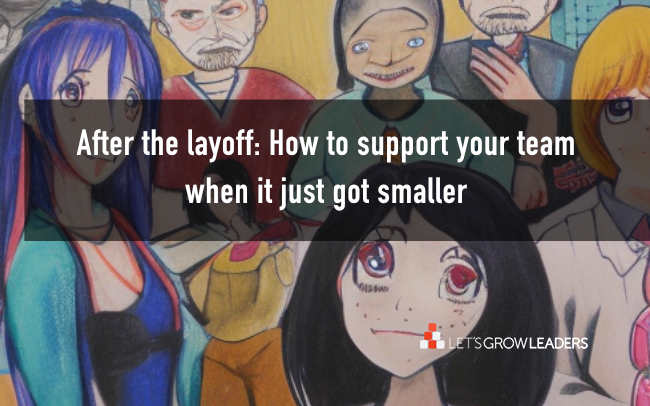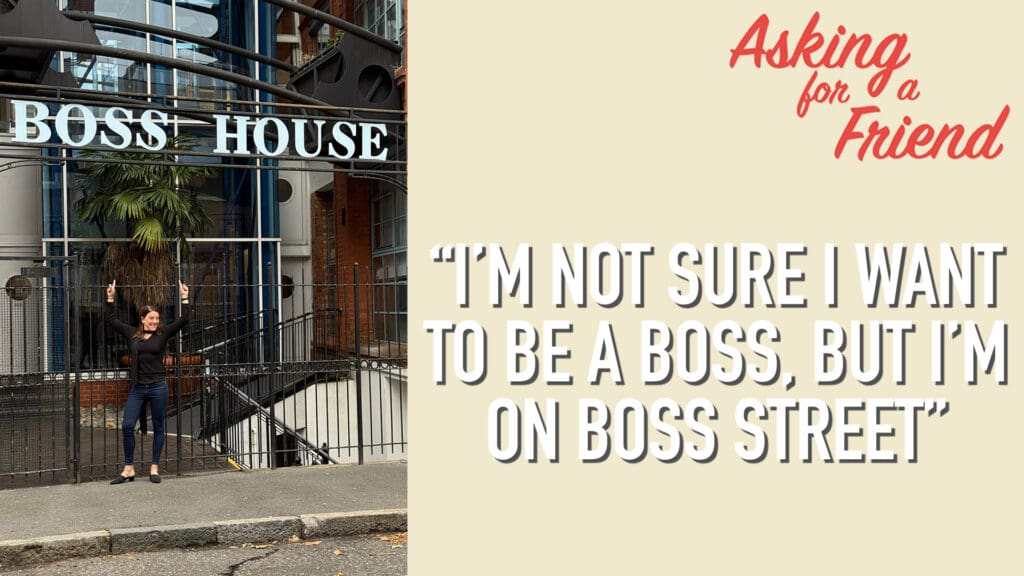Practical Tips to Help You and Your Team Heal
After a Heartwrenching Layoff
My LinkedIn feed and email inbox are filled with news of layoffs and reorganizations causing unexpected career turbulence. And I’ve had more than a few phone calls from really talented human-centered leaders hurting for the team members they’ve had to lose and deeply concerned about those who remain after the layoff.
Leading through a layoff is one of the most unnerving challenges you can face as a manager. There’s the initial shock, the communication, the “I wonder if I’m impacted too” angst, and of course, the really painful decisions involved in selecting who will go.
What’s equally difficult is helping your team recover, establishing a new normal, and figuring out how in the world you’ll get it all done with fewer people.
If you’re going through or recovering from a layoff, first let me say, I’m sorry. I know it’s hard.
Getting Real with Your Own Emotions
You care about the humans on your team (those who are gone and those who remain); perhaps you’ve also watched some peers go too. You might have some survivor guilt. Or, it could be you are worried about how to sustain momentum with a reduced staff. And, of course, there’s the matter of rebuilding morale.
Not to mention, we’re already fragile right now. The chaos of the last two years is draining and many of us are running low on resiliency reserves.
I’ve been there. There was one dark point in my career when I received a call once a quarter for two years, giving me my Reduction in Force (RIF) numbers. By the end of that run of layoff after layoff, I had half the team I once had serving my growing customer base. And, I had lost some of my best managers-– many of who had become close friends. We managed to sustain momentum, but it wasn’t easy.
I recently ran into one of the managers (Alyssa) who worked on my team at that time at an event I was keynoting. After the hugs, and the catching up, she looked deep into my eyes and said, “That period was really, really hard, wasn’t it? I learned so much about being a leader during that time.”
Me too, Alyssa. Me too.
And, I can only imagine dealing with a layoff on the tails of a pandemic, with a war raging, and all the other unrest that’s making it hard to sleep.
How to Lead Well After a Layoff or Downsizing
 Much of what I learned from employee engagement came from that time. You’ve got to be extra connected and extra-human-centered during and after a layoff.
Much of what I learned from employee engagement came from that time. You’ve got to be extra connected and extra-human-centered during and after a layoff.
Depending on how the downsizing was handled you might have some stupidity-recovery work to do. If you’re still neck deep in downsizing, read my article, 5 Mistakes to Avoid During a Restructure, to avoid these sadly all-too-frequent mistakes.
If you’ve moved on to the rebuilding stage, here are a few tips that can help.
1. Be as human and connected as possible (gather in person, or at least turn your cameras on)
Your team will need extra time and space to process their feelings. And, will likely be extra sensitive to THE WAY things are being communicated as well as what is being said. I can’t tell you how many complaints I get about managers who are perceived as “hiding behind email” during difficult times.
2. Help your team process their feelings
“It’s not personal,” is about the worst thing you can say. Of course, this is personal. Losing your job is stressful under any circumstance. And it’s likely people on your team have good friends caught up in this process on top of some other traumatic stress they’re dealing with. Go slow. Be a listener. Give people the time and space to process what’s happening.
3. Get support (outside of your team)
I know it’s hard. It’s tempting to vent to your team as you stare at the mountain of work to do with fewer people to do it. Seek out some trusted advisors and do your layoff venting behind closed doors. Your team needs to feel confident that you’ve got a path forward. Blaming others or cursing the universe only makes it worse.
It’s okay to let people know you’re sad too because you care about the people who are laid off as well as those that are staying. But, resist the urge of going overboard by using your team to process your deep emotions, and find other support to do that (e.g. a mentor or a trusted peer).
4. Support your team members in their job search
Do whatever you can to help your downsized team members land well. It’s the human, decent thing to do for the impacted employees, and it will go a long way in building trust and loyalty with those who remain after the layoff. Even once they’ve left your company there are plenty of ways you can help with networking and other support.
Nothing feels better than helping a great employee caught up in a bad twist of fate land well.
5. Let your remaining high-performers know how valued they are
There’s no question, downsizing makes everyone a bit twitchy, particularly when cuts involve strong contributors who just happened to be in the wrong chair when the music stopped. Be sure your “A” players know how much you value them and help them see the broader opportunities that are available to them, beyond their current role. Help them develop and expand their competencies to make them invaluable as the company evolves.
6. Work to eliminate and streamline work
Before you assume “Nothing we’re doing is unnecessary,” get your team together and ask (and then don’t let them tell you that “nothing can go” either). Look under every rock for time spent on seldom reviewed reports or redundant processes. You can’t do the same work with fewer people for long without burnout or sacrificing quality. Get serious about what can go.
Our Own The U.G.L.Y. process is an easy way to facilitate this conversation after a layoff.
For example, you may invite your team to consider, “With regard to maintaining our results and customer experience with fewer people on our team…
- U- What are we Underestimating
- G- What’s got to Go
- L-Where are we Losing
- Y- Where are we missing the Yes
If you want more information on using the Own the U.G.L.Y. Process or to get other tools to help your team think critically during this challenging time, you can download our FREE I.D.E.A. Incubator Guide.
Help your team focus on what’s most important and support them to say “no” as needed so they can focus on what matters most.
7. Fail Strategically– know which balls can drop (and which can’t)
If you can’t find enough work to eliminate, know that some balls are likely to drop (or at least be picked up on the second bounce). Don’t pretend that every goal is equally important, help your team to prioritize. Be sure they know that if they have to screw up something, which of their goals is less critical?
8. Look for help outside of your immediate team
You’re probably thinking, “Karin, now you’re really talking nonsense, if we’re pressed, so is everyone else after this painful layoff!” I’m sure they are. But I also know that in every organization, there is always redundant work going on. Instead of viewing other teams as the competition, or keeping staff at arm’s distance to get them out of your hair, look for opportunities to partner.
Could you pool functions and create a shared services group? Could you lend resources back and forth during peak times? Have the confidence to know it can be done, and the humility to ask for help.
Downsizing is never easy. I also know that of all the times I thought we’d been cut too far to survive, we somehow did, and in many cases thrived. Leadership is often about restoring hope and doing what feels impossible.







0 Comments